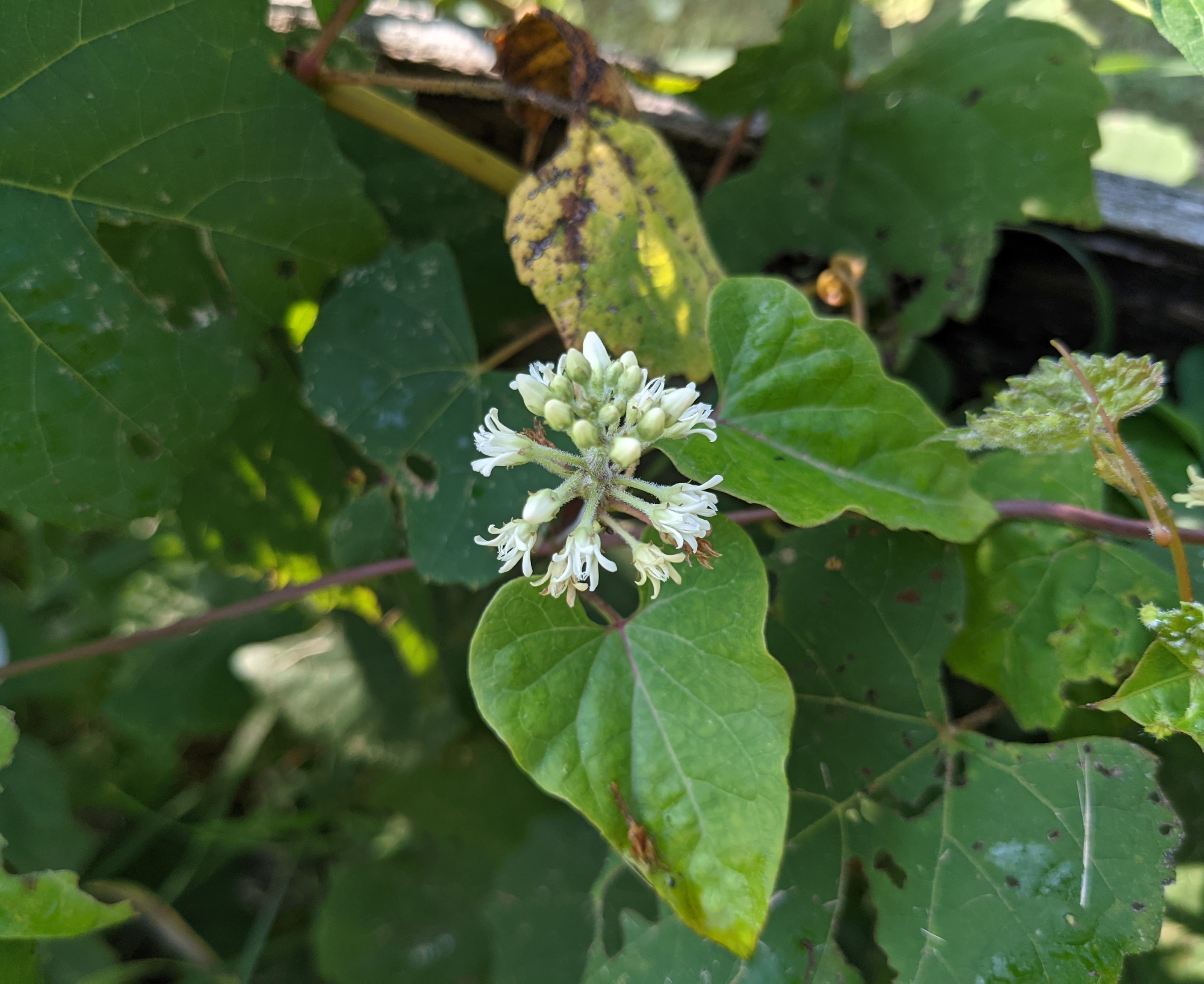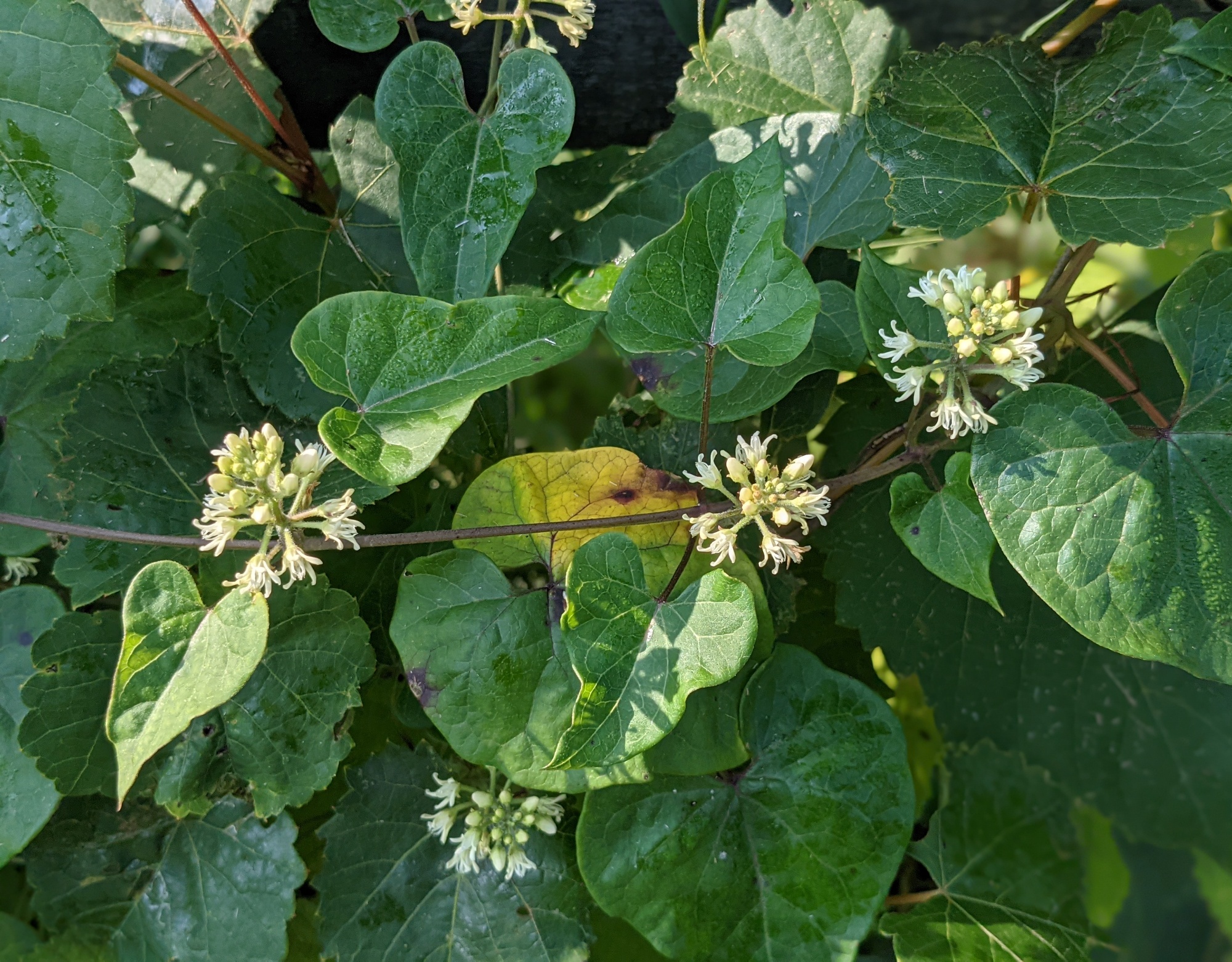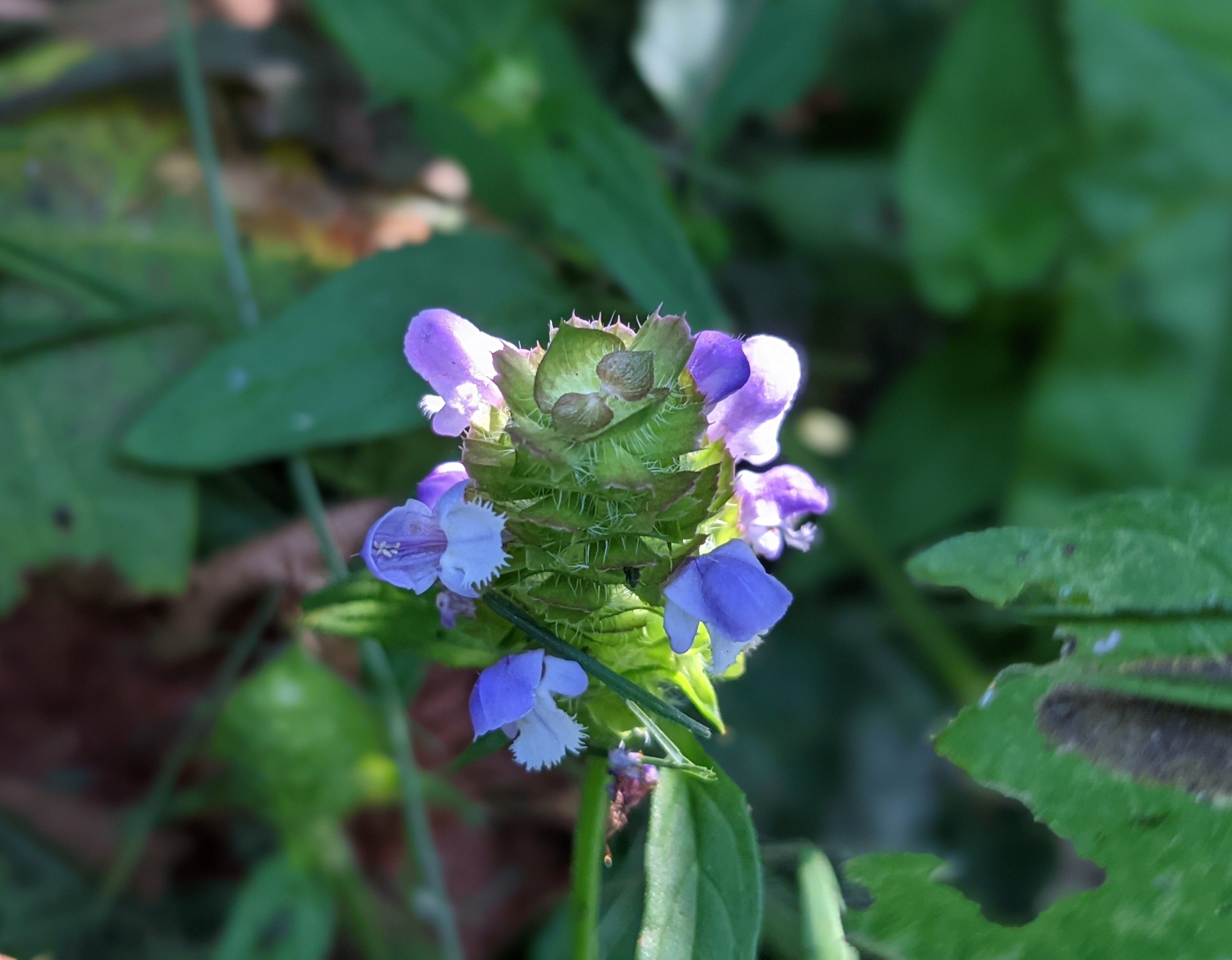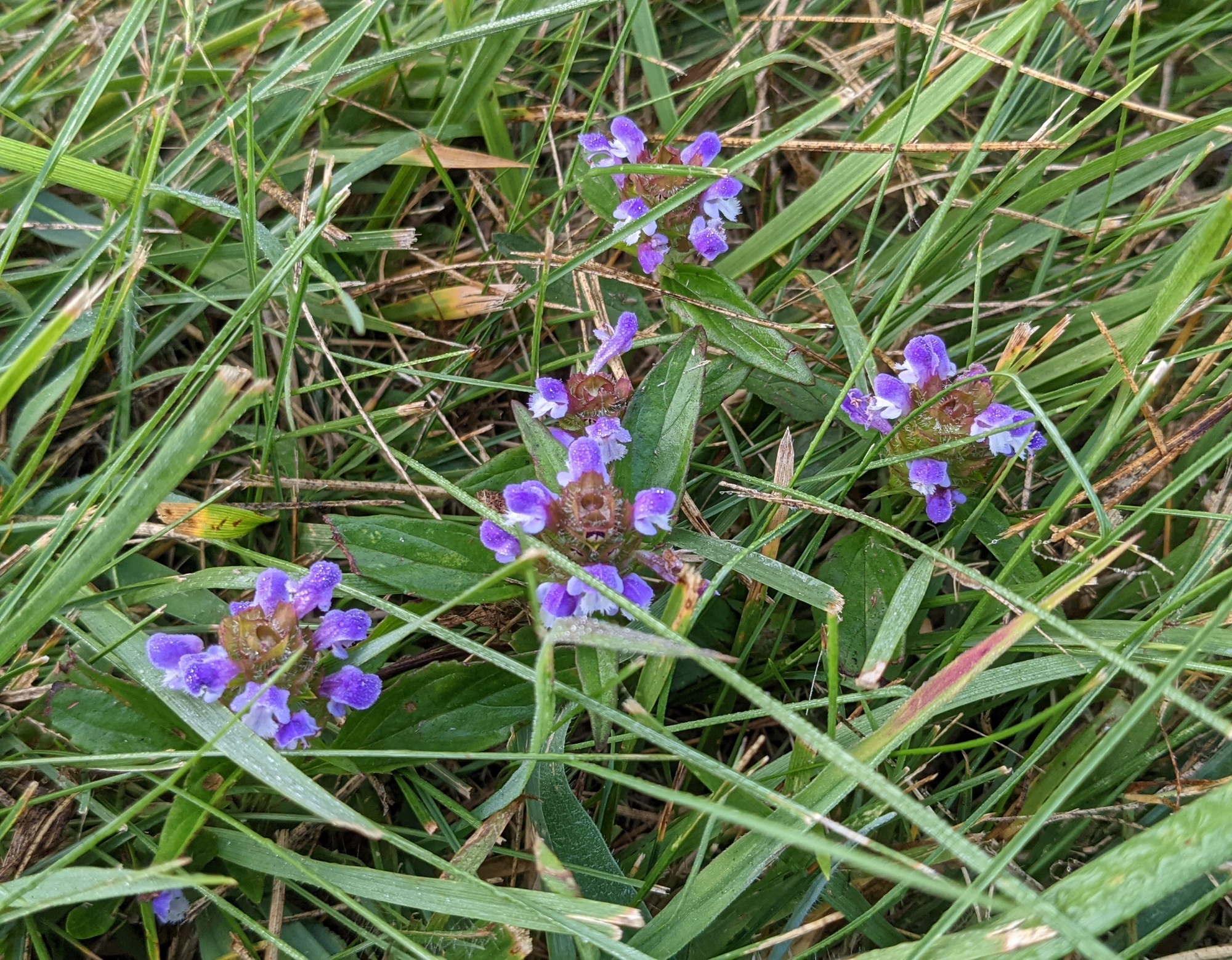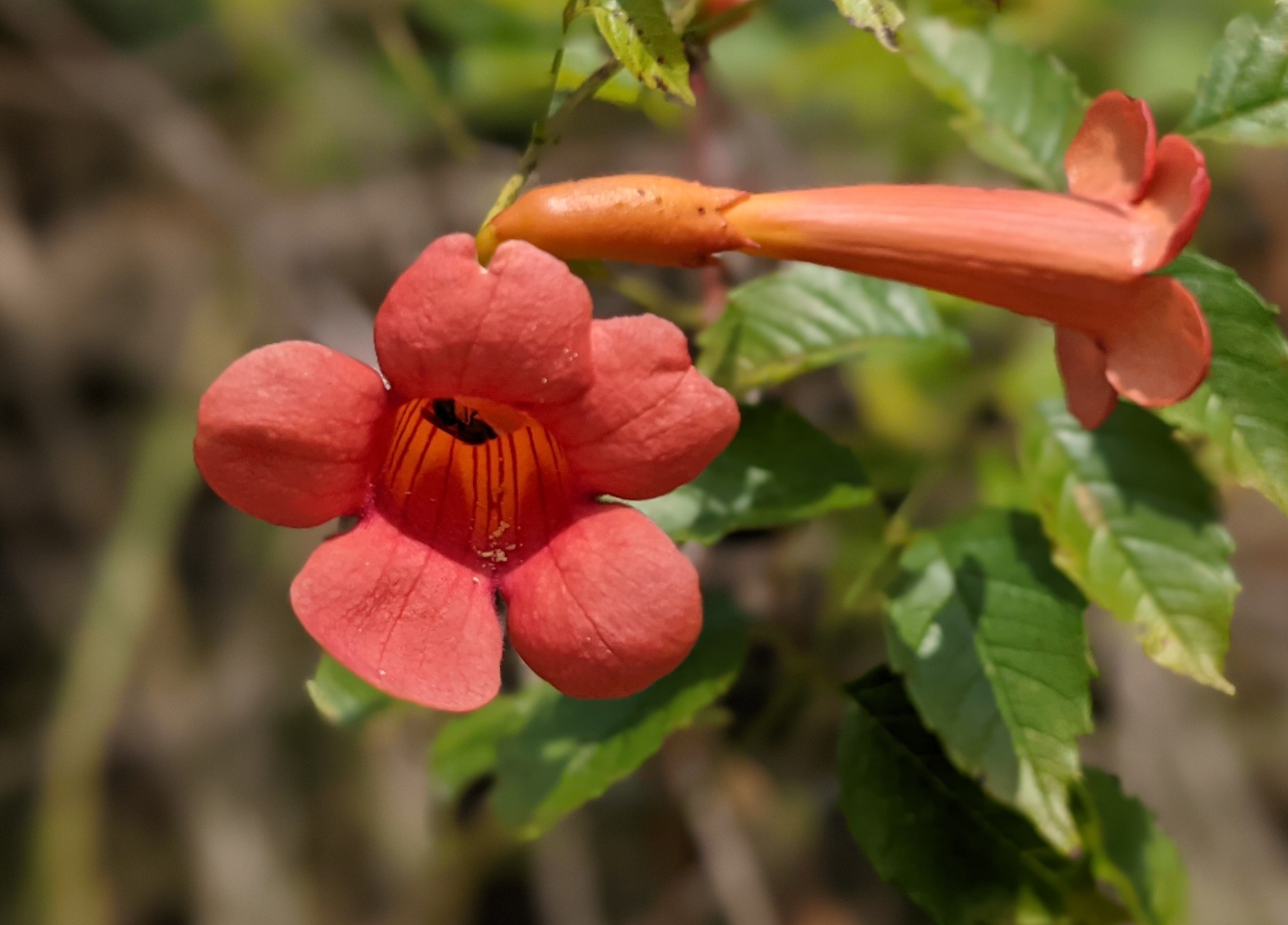
So many flowers, so little time – blooms of all sizes, colors, and fragrances, and I’d like to capture them all. As I picked wild blackberries, I stopped to smell the flowers and enjoy their cheeriness. They’re hard to ignore, aren’t they?
In a far pasture, the bright orange of a small stand of Butterfly Weed beckons pollinators, beaming confidently across the green expanse. This plant definitely looks like a type of milkweed, but it doesn’t ooze milky sap.
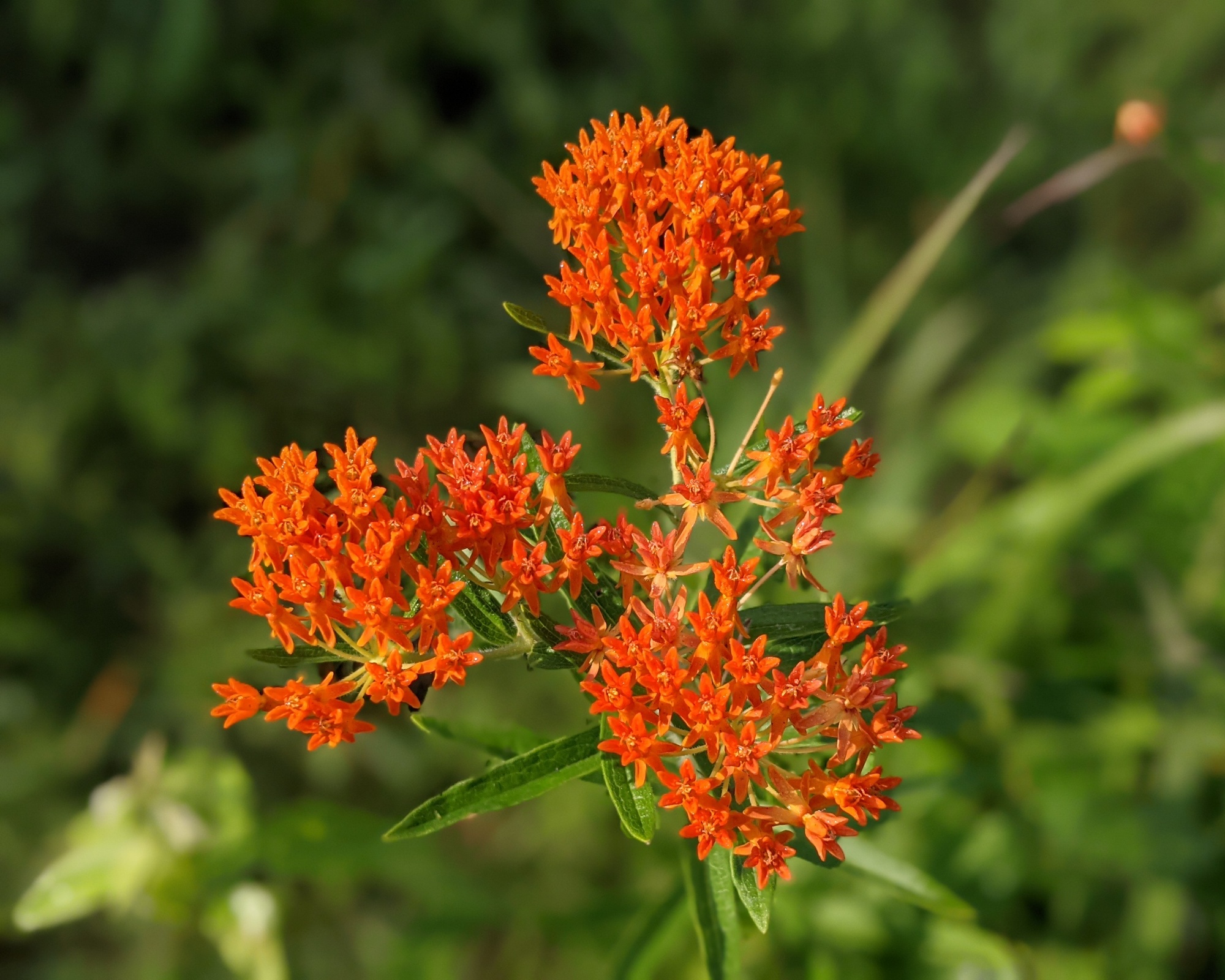
The striking blue of chicory blooms dots the pastures. The geese love to eat the flowers, and they’re tasty in mixed flower wine. Chicory root can also be – roasted and ground – used to make a coffee-like beverage. Chicory is full of inulin, a prebiotic (indigestible) fiber that has notable health benefits.
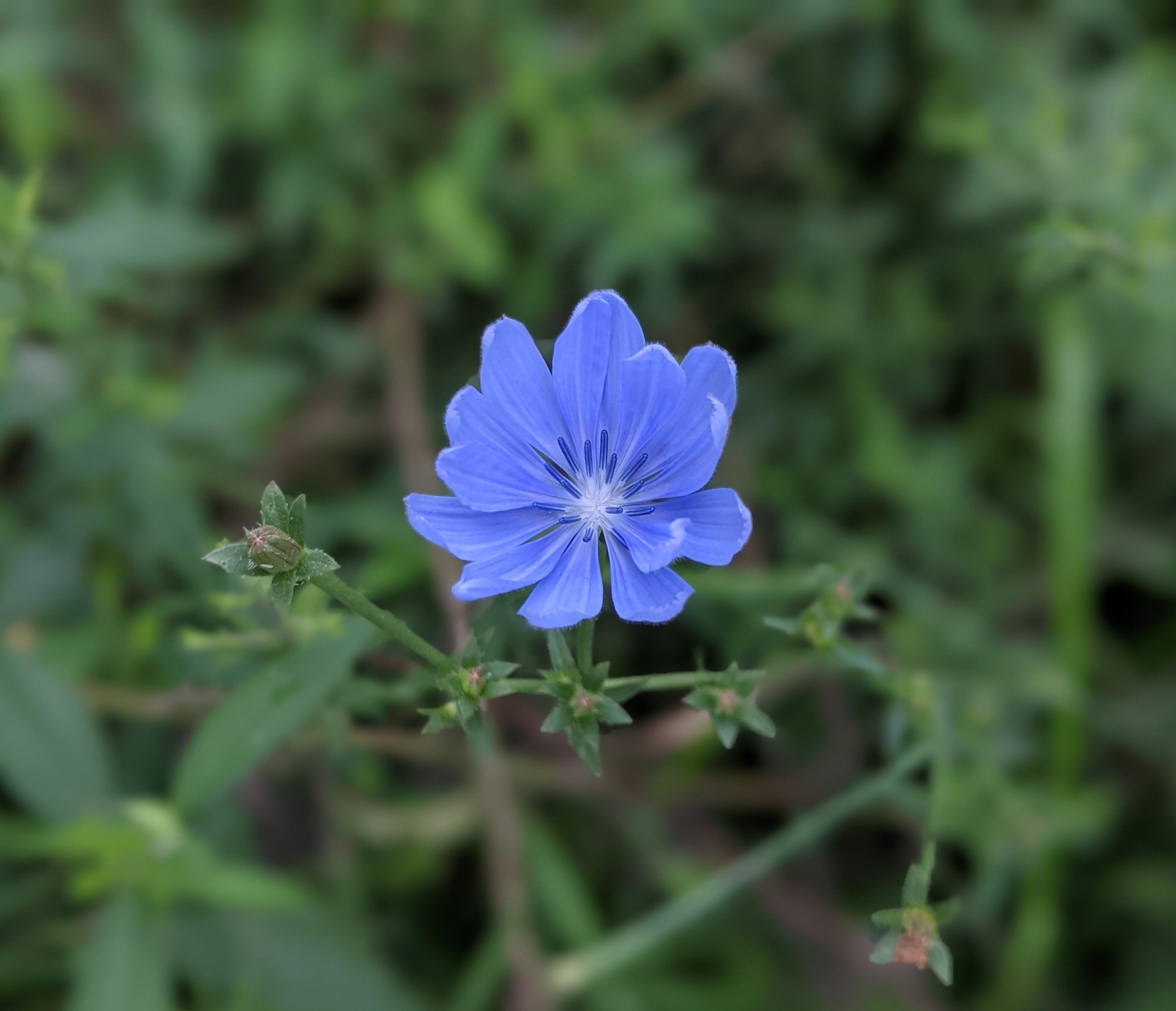
Cheery and bright yellow, this yellow-flowering plant grows back year after year by our patio. It resembles mullein, but it appears to have 4 petals (rather than mullein’s 5), as well as other differences.
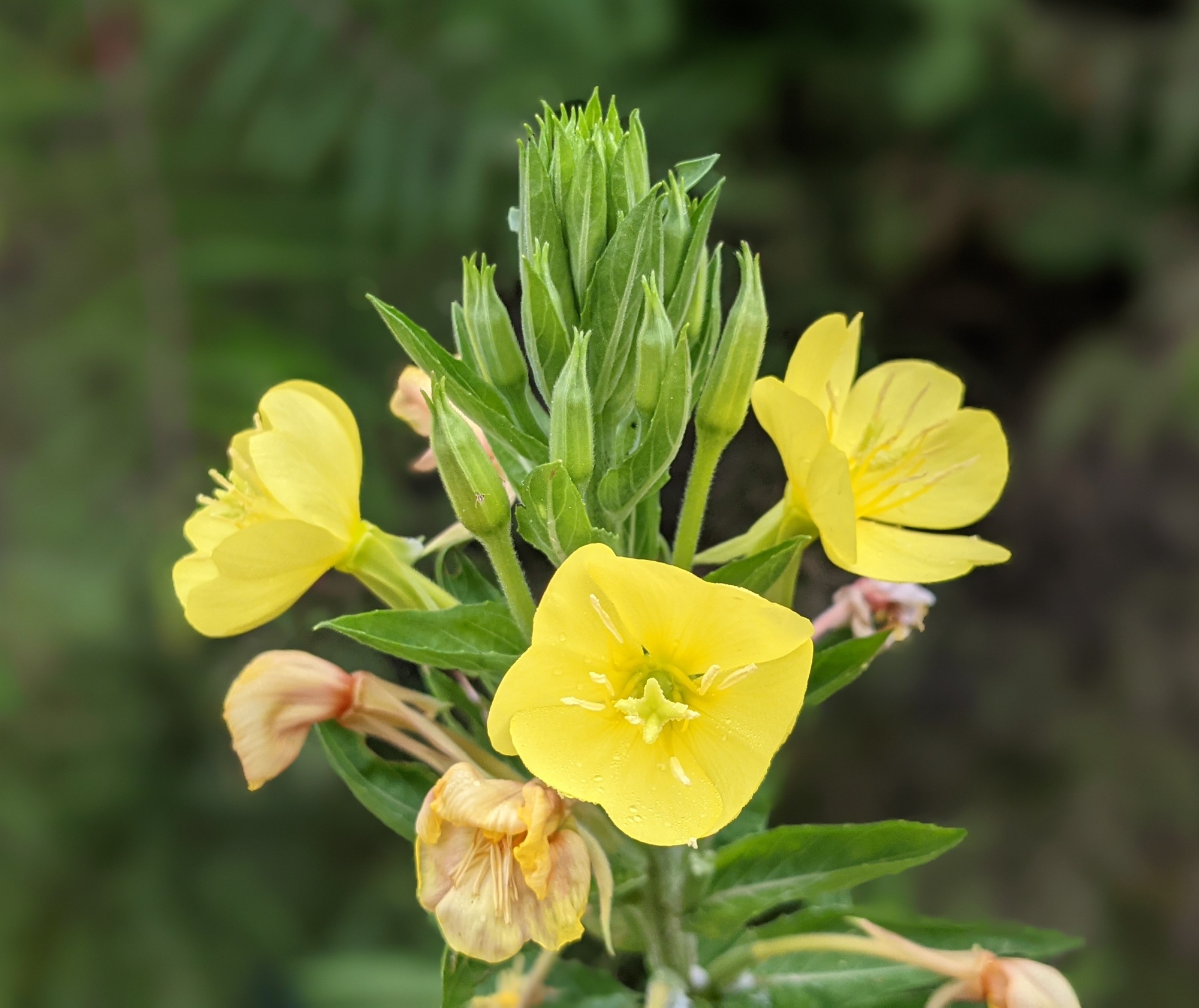
Another mystery flower: I was drawn by a lovely fragrance that wafted to me on the breeze – tracking it down led me to the fence line along the drive. These flowers were strung like fairy lights along vines that wrapped around the wooden fence. I’m still trying to identify them – do you know what they are?
I was also pleased to see some of the tiny purple blooms of Heal All (or Self Heal), a very useful medicinal herb. This plant tends to often grow right in the middle of pasture and can easily be overlooked because of its diminutive size. As I identify potentially useful plants on the farm, I make a mental note of where I’ve seen them so I can harvest them as needed.
What’s that peeking out from the shady brush line along a seasonal stream? The vibrant orange blossom is Spotted Jewelweed, valued as a natural treatment for irritations caused by poison ivy (definitely grows here), nettles, or mosquito bites. If I’m out foraging and tangle with poison ivy, I know I’ll be applying a jewelweed poultice in the field immediately, rather than waiting to get back to the house to address it.
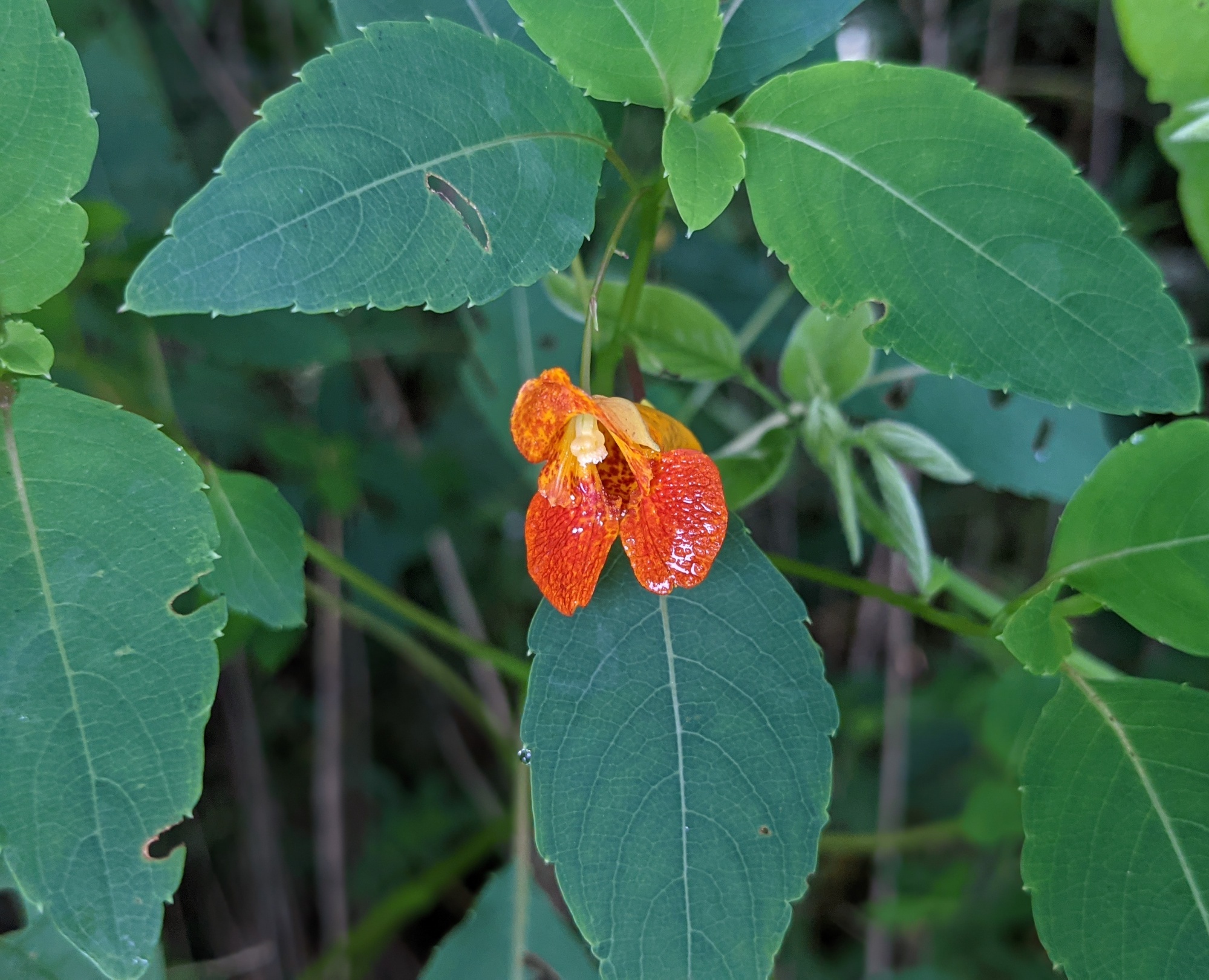
Last but not least, a volunteer sunflower and a row of intentionally-planted ones. The large volunteer has a happy little head developing, and will no doubt soon reveal its sunny disposition to the world (and the sun). I love how sunflowers follow the sun, turning their faces to be bathed in the light.
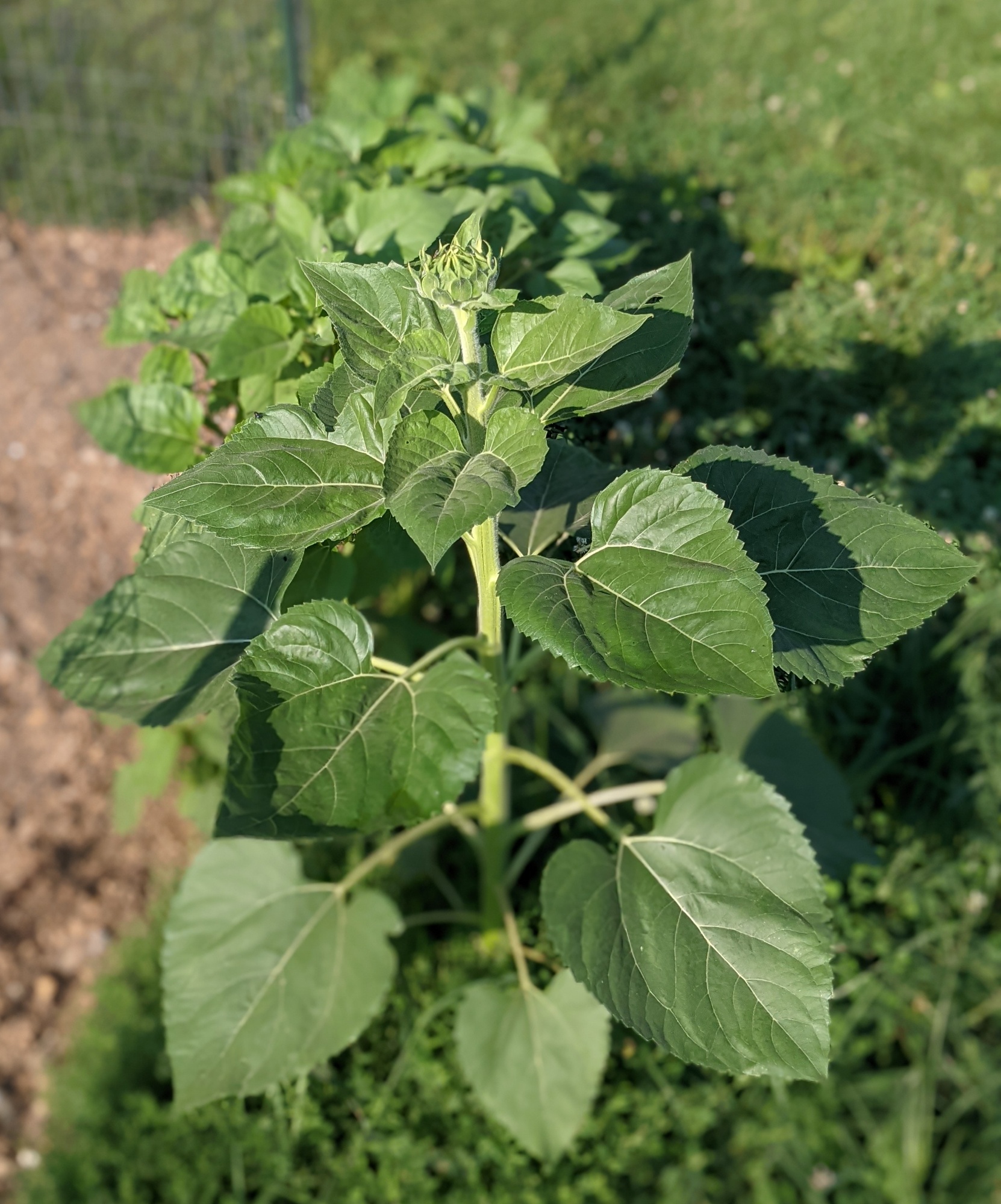
Sunflowers are probably the easiest flowers to grow, requiring basically no intervention and producing so many seeds when their heads mature. From one seed, many! The birds always seem to miss some seeds (and they sprout)…they’ll even germinate atop the hard-packed ground. If you’re not confident about your gardening skills, try growing sunflowers – they can make anyone feel like a green thumb.

